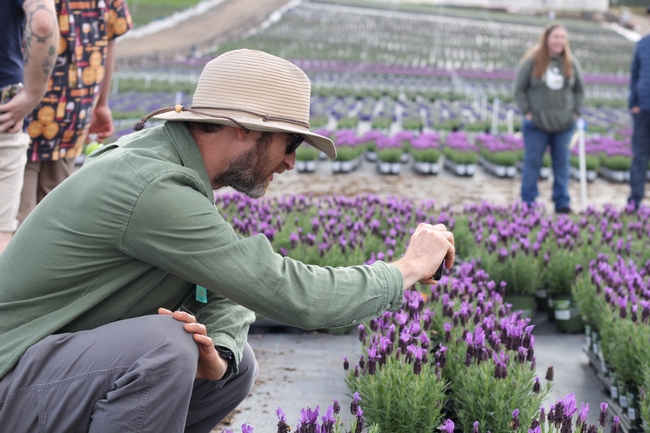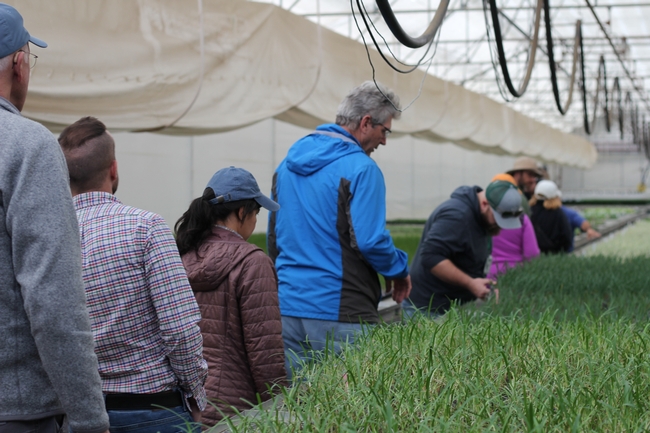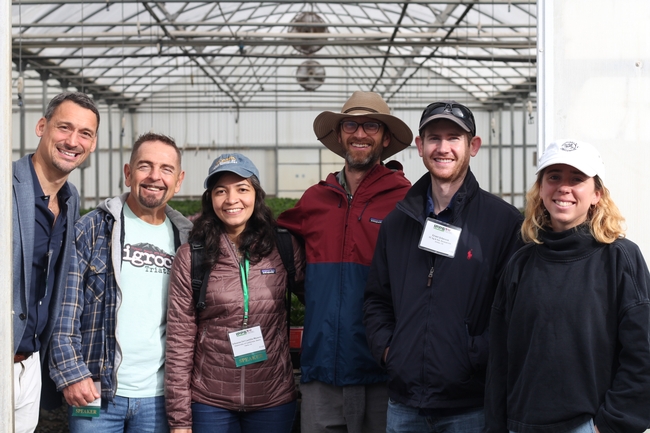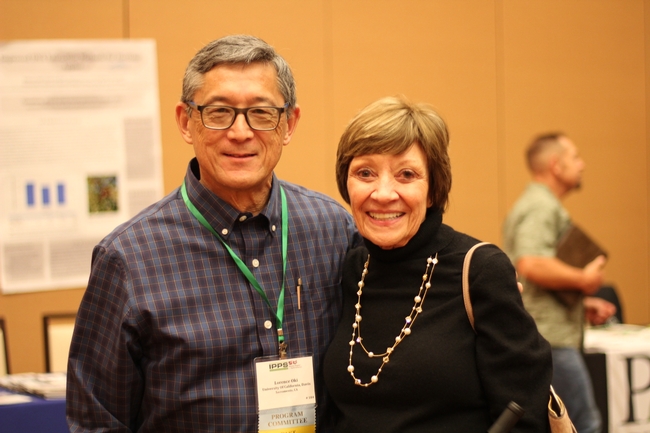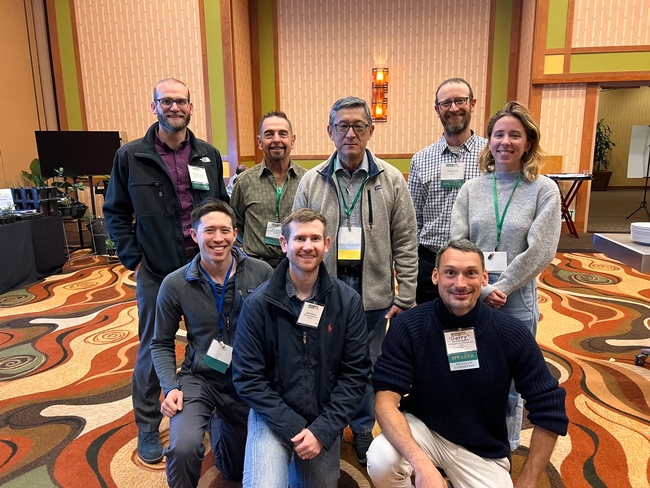- Author: Saoimanu Sope
In late January, the University of California Nursery and Floriculture Alliance co-hosted the 62nd Western Region International Plant Propagators' Society (WR-IPPS) Annual Meeting in Temecula.
UCNFA, associated with the Nursery and Floriculture Workgroup of UC Agriculture and Natural Resources, is a statewide partnership of researchers and educators, growers, floriculture associations and allied industries. It serves the educational needs of California's agricultural industries that produce greenhouse crops and nursery products including vegetable seedlings, ornamentals, fruiting trees, vines and shrubs.
“Up until 2007 and before almonds and grapes became a big deal, nursery and floricultural products were the top crop commodity in the state,” said Loren Oki, specialist emeritus of Cooperative Extension at UC Davis and co-director of UCNFA. “Nurseries and floriculture are a $3.6 billion industry in California, but not many people know about it.”
Since its inception in 1951, IPPS has sought and shared plant production knowledge globally with an emphasis on nursery production. Oki has been a member of IPPS since the 1980s. His father, George, who owned and operated Oki Nursery, helped establish the Western Region in the 1960s, paving a path for Oki who served as president of WR-IPPS in the 1990s.
Although this year was the first that UCNFA co-hosted, Oki is confident that it won't be the last. “We're already planning a conference for the fall in conjunction with WR-IPPS. Since the target audience of UCNFA are growers, it just makes sense to partner with growers for these events,” Oki said.
This year's meeting involved 145 attendees, 29 exhibitors and 23 speakers and occurred over four days – two of which were dedicated to grower tours and the other two offering educational presentations in both English and Spanish, another first for WR-IPPS.
Gerry Spinelli, UC Cooperative Extension production horticulture advisor for San Diego County and member of UCNFA's administrative committee, was instrumental in coordinating the event. When he wasn't moderating sessions or facilitating Q&A, Spinelli was sharing his expertise on measuring pressure, distribution uniformity and improving irrigation management in English and Spanish.
“It's rewarding to see so much statewide interest in nurseries and floriculture,” said Spinelli. “WR-IPPS is a great opportunity to showcase the extraordinary San Diego nursery and greenhouse industry on an international stage, and a perfect occasion for clientele to meet our new UC Cooperative Extension advisors.”
Bruno Pitton, who became the UCCE environmental horticulture advisor for Placer and Nevada counties in November, appreciated the increase in science-based talks compared to previous years.
“Before, there were more talks on production practices from grower to grower. This year, I noticed that there's more science extension talks – which is a good thing,” said Pitton, who also gave a presentation on nitrogen management in nursery production and irrigation training.
Recent UC ANR hires like Emma Volk, production horticulture advisor for Ventura and Santa Barbara counties, had the opportunity to learn not only from industry leaders nationwide, but fellow ANR colleagues. For example, she heard Don Merhaut, UCCE specialist for nursery and floriculture crops based at UC Riverside, present on controlled release fertilizer dynamics in containers during a one-year growing cycle for Southern California.
UCCE advisors and specialists had a significant presence at this year's meeting, leaving a positive impression on attendees, including Tony Shireman, WR-IPPS president, who said that partnering with UC ANR experts helps IPPS achieve its mission to seek and share plant knowledge globally.
“We're fortunate to have connections to people like those joining us from Cooperative Extension. It allows us to expand our knowledge and extend our reach,” Shireman said.
Johanna Del Castillo Munera and Kosana Suvocarev, two professors of Cooperative Extension at UC Davis, also attended and joined Spinelli for both English and Spanish sessions. Del Castillo Munera presented on disease challenges and management for nurseries, and Suvocarev talked about crop water requirements for irrigation scheduling in nurseries and greenhouses.
“There's a good sense of community here and there's a lot of passion from the speakers,” said Grant Johnson, UCCE urban agriculture technology advisor for UCCE Los Angeles and Orange counties, adding that he valued the opportunity to learn from growers and scientists simultaneously.
After attendees spent an entire day touring local nursery and floriculture operations and learning from growers in North San Diego County and Riverside County, they concluded the day with a dinner and keynote address from Karen Ross, California Department of Food and Agriculture secretary.
On the last day, Chris Shogren, UCCE environmental horticulture advisor for Los Angeles County and member of UCNFA's administrative committee, and Eric Middleton, UCCE integrated pest management advisor for San Diego, Los Angeles and Orange counties, talked about pest and pathogen management. The advisors offered fascinating visuals including photos comparing the size of agave mites to a penny, and led a stimulating Q&A session.
To learn more about the UC Nursery and Floriculture Alliance, visit https://ucnfa.ucanr.edu/.

